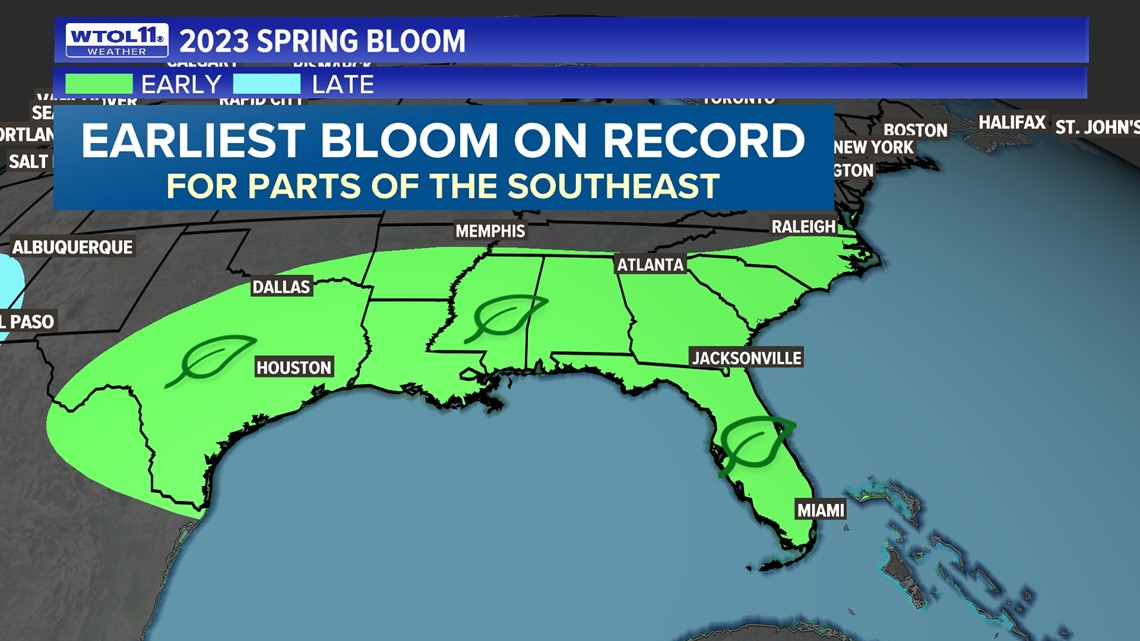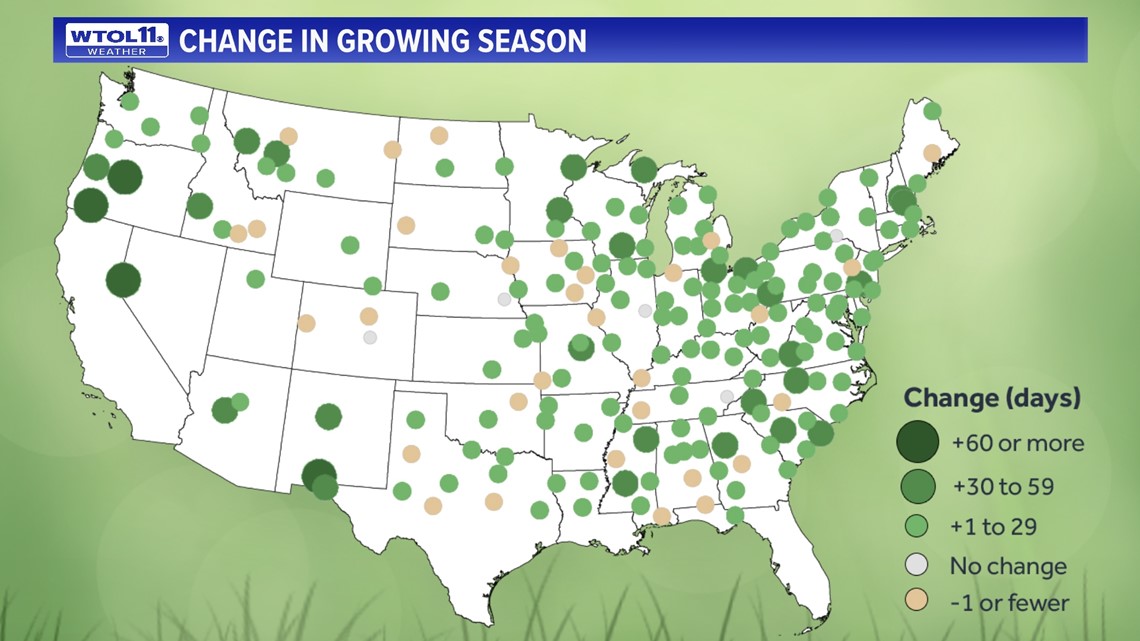TOLEDO, Ohio — Spring officially started Monday, kicking off allergy season for many individuals.
As we round the corner from March into April, spring allergies will grow more prevalent and severe, in part due to climate change. How is spring allergy season changing and what role does climate change play? We'll answer those questions in this week's edition of Climate Friday.
Allergy season usually ramps up in the spring, continuing all summer into the early autumn. Even though spring may come to mind when you think about peak allergy season, winter weather can impact the onset of many allergens.
Allergy season starts sooner following warm winters, a trend that climate change is making more common. Winter weather has grown several degrees warmer in the last decade alone, leading to an earlier onset of spring allergies. This winter exemplified this warming trend indicative of global warming.


Let's start with December. That month that has been most impacted by climate change, warming up by an average of 3.1 degrees in the past decade in Toledo. This December was another 1.1 degrees above the new climate normal, featuring a balmy average high temperature of 40.
January turned even milder, featuring temperatures a whopping 7.6 degrees above average. February followed suit with an average temperature 6.2 degrees warmer than usual. And while March has been more seasonable, it has delivered mean temperatures over a degree above average as of March 24.
This extended period of mild weather has facilitated an early onset of spring allergies. Why? It all has to do with the growing season. Area farmers are quite familiar with the concept of the growing season, or extent of days without a freeze. The more days above 32 degrees, the longer the growing season and the more time allergens have to foster.
The growing season has expanded by 45 days in the last half-century. In 1970, Toledo saw an average of 145 consecutive days above freezing over the course of the year. Now, that number is around 190.
While months like June, July, and August have always been part of the growing season even before manmade emissions and global warming, those mild late-winter and early-spring days have added onto the growing season, causing a quicker onset of spring allergens.
This expansion of the growing season has impacted not just northwest Ohio and southeast Michigan, but most of the United States as a whole. Parts of Ohio have seen a vast increase in the growing season of over 60 days in the past 50 years.
The entire Buckeye State along with most of the Great Lakes region has seen an expansion of the growing season.
Only a few cities in the entire country have experienced a decline in the growing season in recent decades. The green dots on the map below represent locations that have seen an increase in the growing season, whereas the brown dots show areas that have seen a decline in the growing season.


The overwhelming uptick in the growing season representative of climate change is apparent. Global warming has caused a sizeable increase in the number of consecutive days above freezing, leading to earlier and worse spring allergies.
Due to the exceptionally mild winter in addition to recent rainfall, tree pollen will likely be more severe than usual this season. Starting in late-February this year, tree pollen will likely intensify in April.
Typically, allergies related to tree pollen continue through May, coinciding with the end of spring and start of summer. The summer season brings the peak of grass pollen, which usually aggravates allergy sufferers in mid-June.
This summer may bring more severe allergens than usual, in part due to the humidity, a weather variable exacerbated by climate change. Humid, stagnant, thick air intensifies allergies and fuels the growth and proliferation of mold and bacteria.
Muggy air is more common now than it was decades ago due to climate change, which not only increases temperatures, but also evaporation and thus moisture. Allergies related to mold and bacteria will likely be more severe this year due to the increase in humidity associated with climate change.
As we round the corner from March into April, spring allergies will kick up within the next few weeks. April and May often bring the peak of spring allergies, and you may notice more significant symptoms than in past years.
The weather plays a significant role in spring allergies, and the last few mild months have already contributed to an early onset of spring allergens. The weather over the coming weeks could aggravate allergy sufferers even more.
RELATED VIDEO

